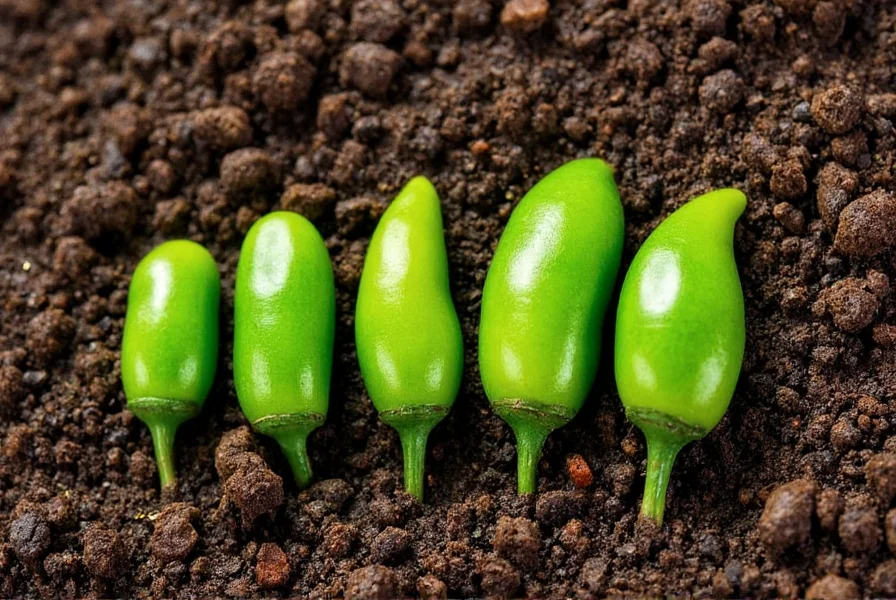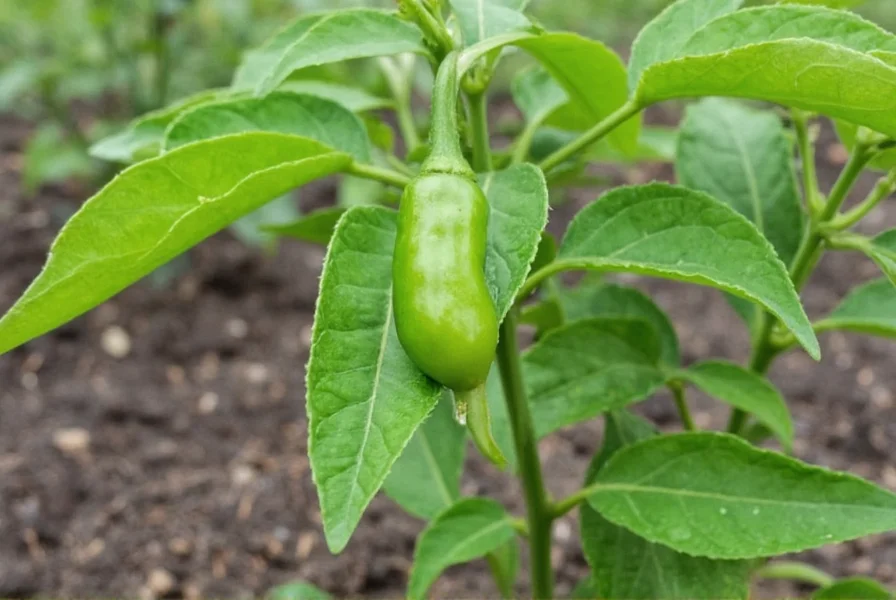Home gardeners increasingly choose to grow serrano peppers from seed due to their culinary versatility and manageable heat level. Unlike store-bought plants, starting from serrano pepper seeds gives you complete control over growing conditions and ensures you're working with fresh, viable genetics. This comprehensive guide covers everything you need to successfully cultivate these vibrant peppers from seed to harvest.
Understanding Serrano Pepper Seeds
Serrano peppers (Capsicum annuum var. macrocarpum) originate from the mountainous regions of Mexico's Puebla and Hidalgo states. The seeds themselves are small, flat, and typically light tan to golden brown. Each mature serrano pepper contains approximately 20-30 seeds, though commercial seed packets provide professionally cleaned and tested seeds with higher germination rates.
When selecting organic serrano pepper seeds for planting, look for plump, uniformly colored seeds without cracks or blemishes. Fresh seeds have a germination rate of 70-90%, while older seeds (over 2 years) may drop to 30-40%. Proper storage in a cool, dark place can extend viability up to 4 years.

Complete Guide to Planting Serrano Pepper Seeds
Timing your planting correctly is crucial for successful serrano pepper seed germination. Start seeds indoors 8-10 weeks before your last expected frost date. The ideal soil temperature for germination ranges between 75-85°F (24-29°C), with consistent moisture but not waterlogging.
| Planting Stage | Temperature | Timeline | Moisture Level |
|---|---|---|---|
| Germination | 75-85°F | 7-14 days | Consistently moist |
| Seedling Growth | 70-80°F | 4-6 weeks | Slightly drier between waterings |
| Transplanting | 65-90°F | After last frost | Deep watering 2-3x/week |
Step-by-Step Planting Process
- Use seed starting mix in 3-4 inch pots with drainage holes
- Plant 2-3 seeds 1/4 inch deep per container
- Maintain consistent soil moisture with spray bottle
- Provide 14-16 hours of grow light daily
- Thin to strongest seedling when first true leaves appear
- Begin hardening off seedlings 7-10 days before transplanting
Optimal Growing Conditions for Serrano Peppers
Serrano peppers thrive in conditions that mimic their native Mexican highlands. These growing serrano peppers from seed require:
- Soil: Well-draining, slightly acidic (pH 6.0-6.8) with organic matter
- Sunlight: Minimum 8 hours daily (10+ hours preferred)
- Water: Consistent moisture without saturation (1-2 inches weekly)
- Fertilizer: Balanced formula (10-10-10) every 3-4 weeks after transplanting
Unlike bell peppers, serranos prefer slightly drier conditions once established. Overwatering causes root rot and reduces capsaicin production, resulting in milder peppers. Container growers should use pots at least 5 gallons in size with adequate drainage.

Troubleshooting Common Serrano Seed Growing Problems
Even experienced gardeners encounter challenges when starting serrano pepper seeds indoors. Here's how to address frequent issues:
Germination Failures
If your seeds aren't sprouting after 14 days, check these factors:
- Temperature below 70°F significantly slows germination
- Old seeds lose viability (test with water float test)
- Excessive moisture causes seed rot
- Planting too deep prevents sprouting
Leggy Seedlings
When seedlings grow tall and weak, it indicates insufficient light. Solutions include:
- Increase artificial light duration to 16 hours daily
- Lower grow lights to 2-3 inches above plants
- Gently brush hands over seedlings to strengthen stems
- Consider supplemental red/blue spectrum lighting
Harvesting and Using Home-Grown Serranos
Serrano peppers typically mature 70-80 days after transplanting. They're ready for harvest when:
- Firm to the touch with glossy skin
- Reached full size (2-4 inches long)
- Developed characteristic bright green color (can also be harvested red, orange, or yellow)
Use clean scissors to cut peppers from the plant, leaving a small stem attached. Never pull peppers off, as this can damage the plant. For maximum heat, harvest when fully colored but before wrinkles appear. Store harvested peppers in the refrigerator for 2-3 weeks or freeze for longer preservation.
Advanced Tips for Maximum Yield
Experienced growers use these techniques to boost serrano pepper seed production:
- Pinch off first flowers to encourage stronger plant development
- Apply calcium-rich foliar spray to prevent blossom end rot
- Use black plastic mulch to warm soil and retain moisture
- Hand-pollinate flowers on cloudy days when insects are less active
- Provide afternoon shade in extremely hot climates (above 95°F)











 浙公网安备
33010002000092号
浙公网安备
33010002000092号 浙B2-20120091-4
浙B2-20120091-4